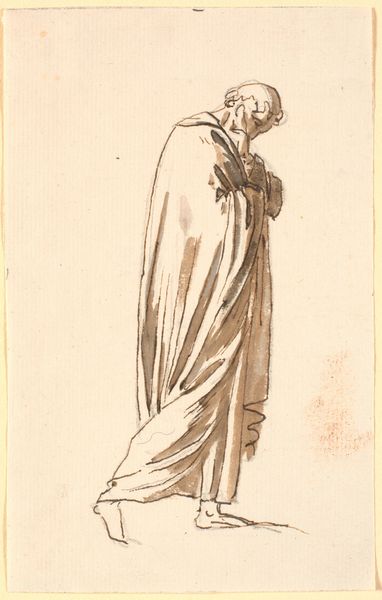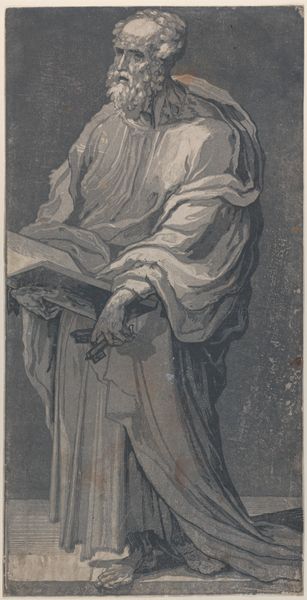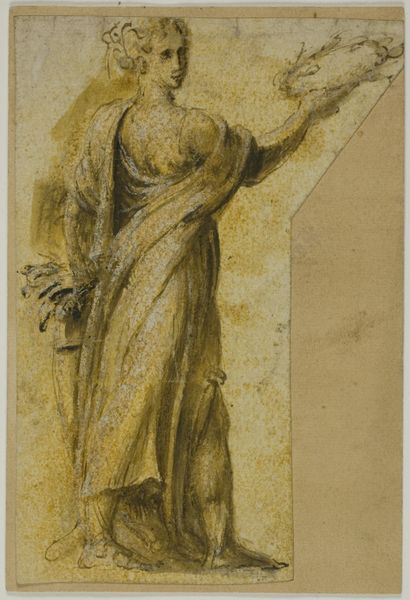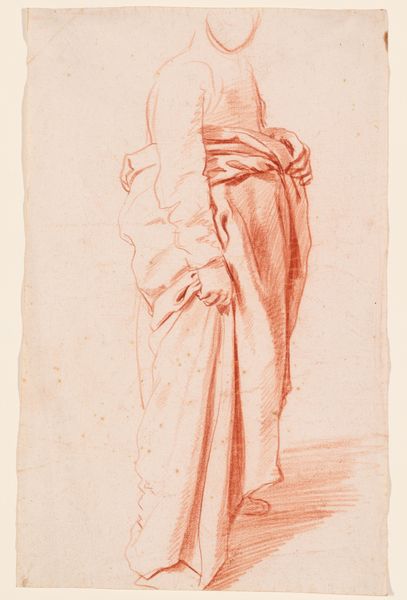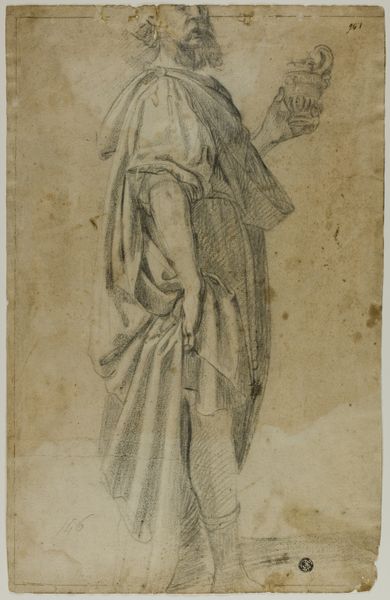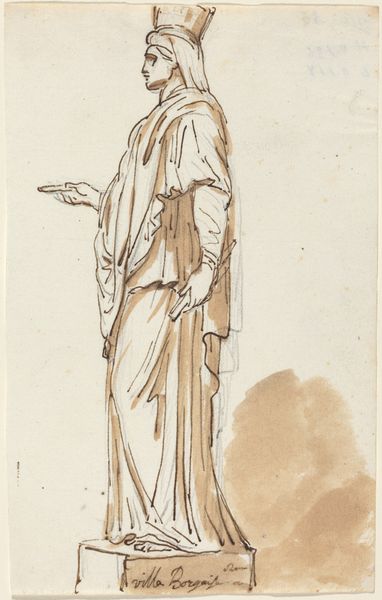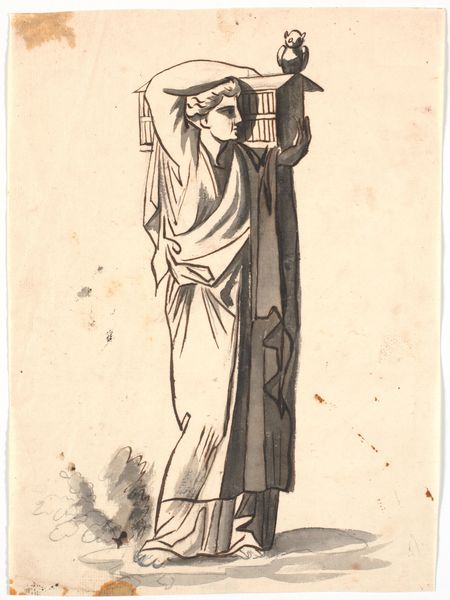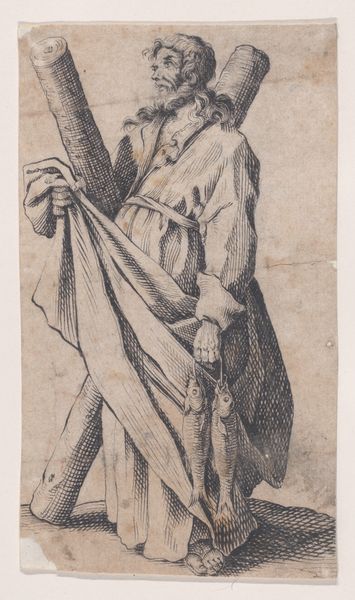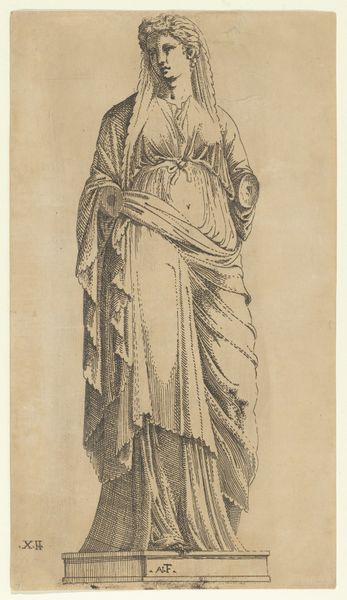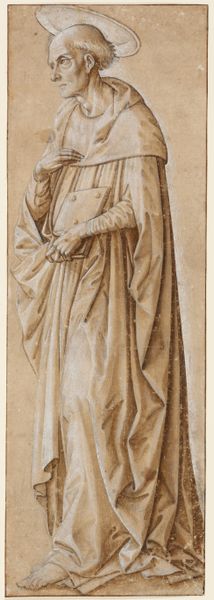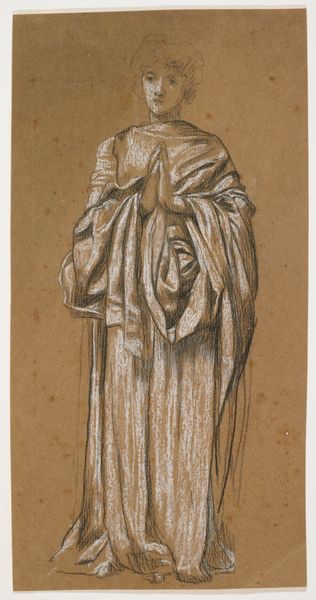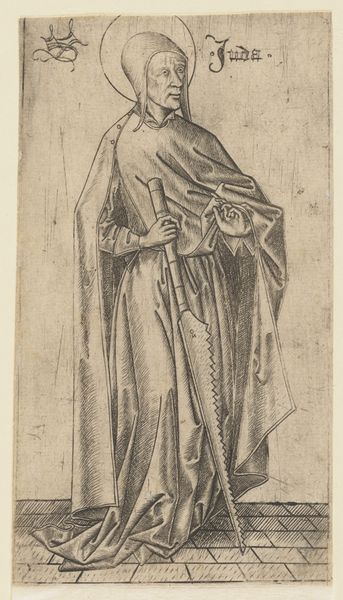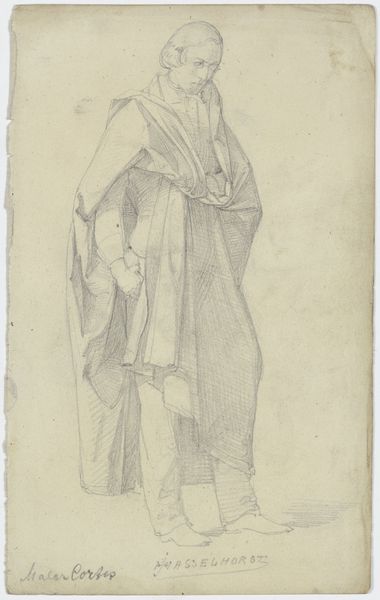
En muse, bekranset og med kranse i hænderne 1743 - 1809
0:00
0:00
Dimensions: 177 mm (height) x 103 mm (width) (bladmaal)
Editor: This drawing, "A Muse, Crowned and Holding Wreaths" by Nicolai Abildgaard, was made between 1743 and 1809, using ink. It feels fragile and unfinished somehow, the washes aren't even, the drawing imprecise. How do you interpret this work? Curator: Let's consider the materials. The artist chose ink and paper, relatively inexpensive and readily available materials. What does this choice of production suggest to you? Is this a sketch, a preparatory study, or a finished piece meant for display? Editor: Perhaps a sketch, then? It's hard to imagine this displayed alongside more 'finished' works. It almost seems like the artistic labour itself is the point, rather than a polished product. Curator: Precisely. Now, consider the social context. Abildgaard lived during a time of significant shifts in artistic production, with growing discussions around art's role in society. This drawing, through its medium and perceived 'unfinished' state, could be interpreted as a rejection of the prevailing hierarchical system that separated 'high art' from craft. Is the muse here elevated, or accessible, made from humble materials and swift labor? Editor: I see what you mean. The accessibility of the materials democratises the art-making process itself, presenting the muse not as some lofty ideal, but something within reach. The production becomes the message, in a way. Curator: Exactly! The labor, the ink, the paper - they aren’t just means to an end, but part of the meaning. Editor: That’s a perspective I hadn't considered, focusing on how the material informs the reading. Thanks for illuminating that! Curator: And thank you for the reminder that the most valuable insights often lie in the simple act of observing the tangible realities of the artmaking process.
Comments
No comments
Be the first to comment and join the conversation on the ultimate creative platform.
